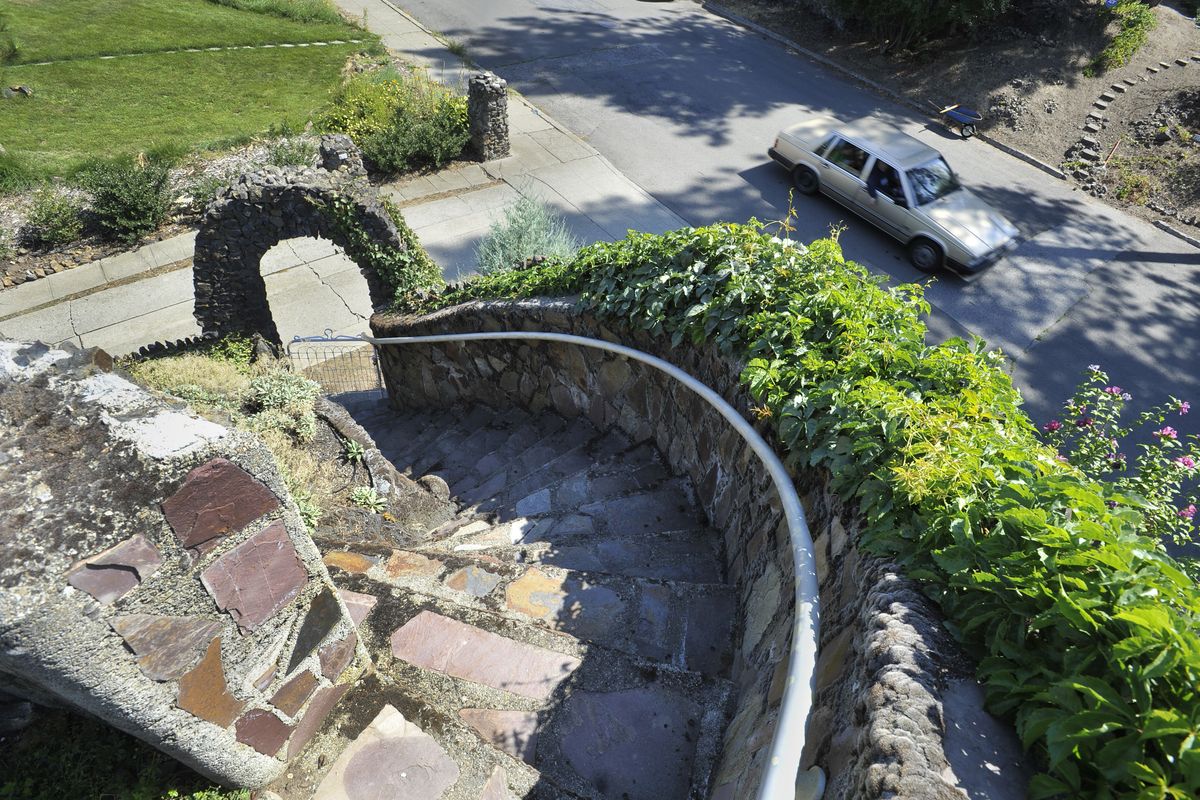Turning nature to art
Basalt used to build home, create garden

Sometimes you run across something so intriguing – in this case, part natural and part man-made – that you just have to find out about it. The something here is a 15-foot basalt outcropping that’s been whittled and augmented into a patio, garden and general object of interest.
The mound all but blocks the house located behind it at 621 E. Seventh Ave., a house whose exterior was constructed from rock chipped from the mound. The project was started by then-owner Warren Brandt in the 1930s and took about 17 years to complete.
The story of the basalt mound is put together from an old newspaper account and stories shared by subsequent owners, residents and neighbors. It seems that Brandt and his wife, Marjorie, decided to work in their spare time to create something unique. Freda McClarty, who bought the house in 2006, said she met an elderly former neighbor who had watched the project take shape, and he told her the Brandts decided to work with what they had on site. “And what they had was rock, a lot of rock,” she said.
The solid outcropping was three times higher than it is today, according to that neighbor, and over the course of many years, Brandt would use his pick ax on it for material to build the thick walls of the house. His wife would wash the recovered rock and they would set to work building little sections at a time. And while the house, renovated over the years by others, is quite charming, it is the Brandts’ work on the mound that is so eye-catching.
There is a spiral stairway leading to the top, approached from under an archway constructed from pieces of the mound itself. Brandt brought in slab rock from the Clark Fork, Idaho, area for the stairs, as well as other rock found in the area when he required something other than basalt. He used aluminum pipe to fashion a handrail along the staircase. At the top of the much-shortened outcropping, he leveled things off and installed a patio, complete with wiring for lights, lawn and an outdoor grill. Plantings include firs, a lilac bush and other groundcover. It is said Brandt would flood the patio in the winter for ice skating.
At the top, he constructed a retaining wall which he topped with slender vertical rock pieces that give the appearance of spear tips. Many have since weathered off, but a number are still in place.
On the east side slope Brandt constructed a white granite water fountain (currently not in operation) with water flowing over seven steps leading to a rectangular aquarium which he stocked with rainbow trout. On the south side is a wishing well and two large rock flowerpots on either side – all made from material from the outcropping. There are tiers along the sides which have been adorned over the years with assorted plantings.
Originally Marjorie Brandt planted roses, dahlias, lavender, asters, petunias, daisies and other flowers all over the mound. They also put in many native grasses and other plants, many of which are still in evidence. Although current owner McClarty rents the house out, she is there each week to work on the mound and its vegetation. Current renter Susan Simonds recalls how her grandson held a special dinner for his girlfriend in the “upper patio” (the house’s backyard is home to the lower patio), complete with candles, solar lights, wonderful view and romantic ambience.
Reports are that the young woman was quite impressed. Just look at the setting – who wouldn’t be?